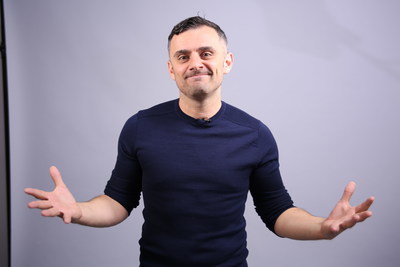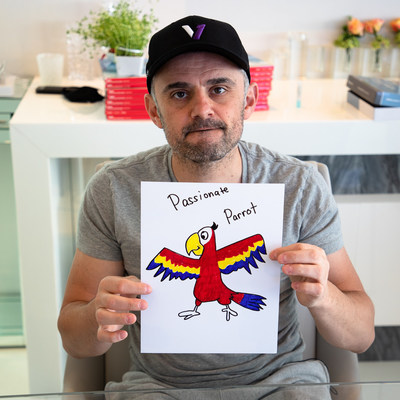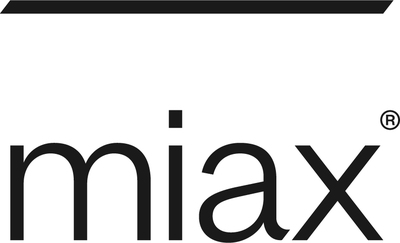GaryVee lays out a “blueprint” for others to follow on how to bring value using NFT Technology: giving access, community, and real life value found in the smart contract.
NEW YORK, May 5, 2021 /PRNewswire/ — Gary Vaynerchuk (aka GaryVee), serial entrepreneur and Chairman of VaynerX, today released his first NFT collection called VeeFriends. The collection, which comprises 10,255 tokens, aims to provide the industry with a blueprint for others to follow on how to bring value using NFT technology by giving access, community and real life value found in the smart contract.

The premise of his approach is to create access and serve his community. By adding “utility” to his tokens and not just sell art – this means each NFT will include a smart contract attached with each token purchase thus giving them “utility” through metadata. Over the last 15 years, Gary has spent time interacting with hundreds of thousands of people — what VeeFriends will allow will be a structure around these interactions. Your NFT will give you a three year access pass to attend VeeCon in 2022, 2023 and 2024. The conference will be focused around business, marketing, ideas, creativity, entrepreneurship, innovation, competition, and of course fun. Gary’s focus is to curate the best experience for his community, bringing enormous access and informational value to all VeeFriends token holders in attendance.
Vaynerchuk who serves as the CEO and Creator of VeeFriends, said: “I have always been about building businesses and creating value for my community – this NFT project allows me to do both. When I saw this macro human trend the only way for me to help others understand it was to be a part of it. I know that NFTs will be here for the rest of my life and I will be actively consulting, investing and advising in this space and I wanted to do it from actually being on the field – doing it myself.” I have always believed in being a practitioner of the craft I believe in.”

VeeFriends was borne out of the idea that business with friends can be fun and you can build a community around common interests. All of the characters were imagined and drawn by Gary himself. The NFTs collection characters represent human traits that Gary most admires and which he believes will lead to happiness and success. This NFT launch begins the process of Gary standing up this intellectual property.
NFT tokens will be released and are available for purchase on VeeFriends.com. Consumers can purchase them using ETH (Ethereum) through a non-custodial digital wallet of their choice via dutch auction. VeeFriends will be accepting payments from MetaMask, Portis, and WalletConnect compatible wallets.
Gary Vaynerchuk and VeeFriends will be pledging a portion of funds from token royalties to various charities that Gary supports. In addition, Gary has created five free scholarship tokens that gives them access to learn from Gary and his professional network.

Lastly, to offset the environmental impact, VeeFriends will be making contributions towards DAOs (decentralized autonomous organizations) to benefit renewable energy (such as solar, wind etc), carbon offsets, and support of ETH 2.0 Proof of Stake (PoS) development which is more energy efficient.
About Gary Vaynerchuk
Gary Vaynerchuk is a serial entrepreneur, and serves as the Chairman of VaynerX and the CEO of VaynerMedia. Gary is considered one of the leading global minds on what’s next in culture, relevance and the internet. Known as “GaryVee” he is described as one of the most forward thinkers in business – he acutely recognizes trends and patterns early to help others understand how these shifts impact markets and consumer behavior. Whether its emerging artists, esports, NFT investing or digital communications, Gary understands how to bring brand relevance to the forefront. He is a prolific angel investor with early investments in companies such as Facebook, Twitter, Tumblr, Venmo, Snapchat, Coinbase and Uber.
About VeeFriends
VeeFriends is a community for GaryVee NFT collectors and every token holder is a member of VeeFriends. As a holder of a VeeFriend NFT, you will be warranted access to VeeCon which is an annual conference Gary aspires to produce for the next three years.
About Nameless by NFT42
The project is powered by nameless – a minting platform by nft42. The Nameless team collaborated with Gary Vaynerchuk to bring VeeFriends to life and managed all the technology for VeeFriends. For more information about Nameless and NFT42 you can visit their website at nft42.com and follow them on discord here.
VeeFriends Music
All the music featured on the VeeFriends videos were beats created by Richie Souf. This release is the first of its kind. Since their initial meeting in 2016, GaryVee and Richie Souf have been looking for a project to work on together. Richie Souf has worked with Future, Young Thug, Playboi Carti, A Boogie Wit da Hoodie, Kevin Gates, Gunna, Roddy Ricch, A-Trak, and Yo Gotti. Instagram, Twitter, Soundcloud, Spotify Page, Splice Page
Assets
Related Links
- Garyvaynerchuk.com
- VeeFriends.com (COMING SOON)
- VeeCon.Co (COMING SOON)
- VeeFriends on Discord
For Press Inquiries:
Maha Abouelenein
maha.abouelenein@vaynermedia.
+1 612.850.8495 (USA)
+97155 662 3949 (International / WhatsApp)
Video – https://mma.prnewswire.com/
Video – https://mma.prnewswire.com/
Photo – https://mma.prnewswire.com/
Photo – https://mma.prnewswire.com/
Photo – https://mma.prnewswire.com/

